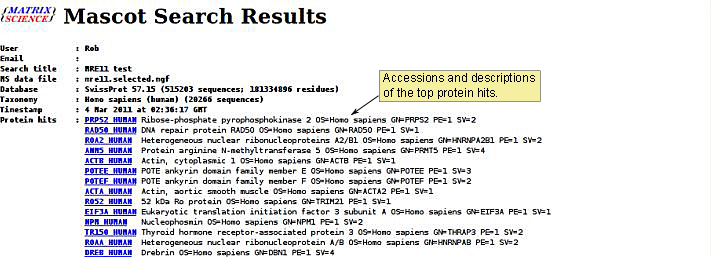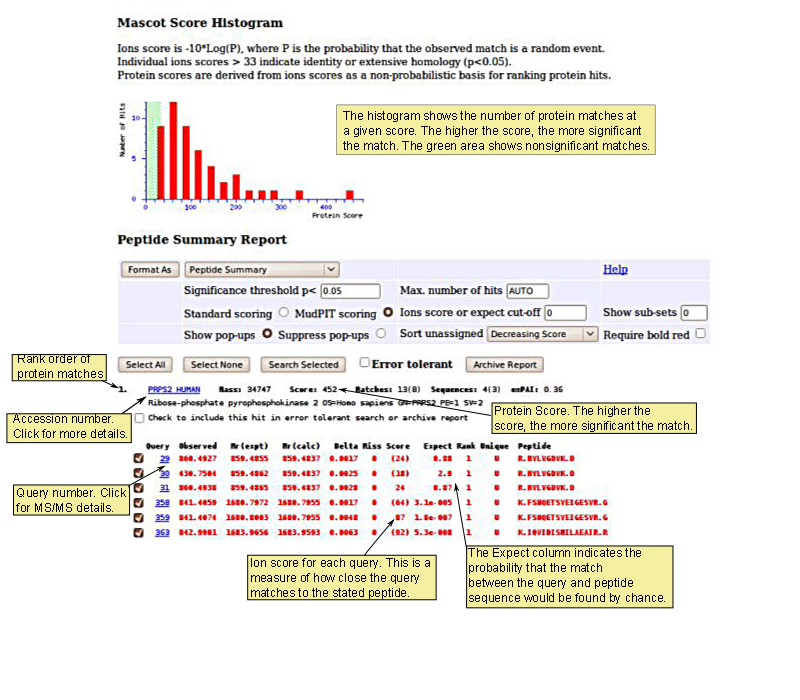
Mascot creates a Peptide Summary report unless there are more than 300 spectra, then a Protein Family Summary is produced. We will focus on the peptide summary. Mascot compares the observed spectra to a protein database to identify the most likely matches. Peptide matches are grouped together as protein hits. The most significant protein hits are listed at the start of the peptide summary.

For each protein match, Mascot calculates an overall Protein Score, which reflects the combined scores of all observed mass spectra that match the amino acid sequences within that protein. The higher the score, the more significant the match.
Due to the background noise found in every experiment, Mascot calculates a "threshold" score representing a 5% confidence threshold. The threshold score will vary from experiment to experiment. In the peptide summary, a histogram illustrates the number of matches for a given score (shown in red). The area shaded green indicates matches that are below the 5% confidence threshold and are therefore considered non significant. Matches with the highest scores show strong significance.

In the summary table, information for each individual query is displayed along with the peptide match. Bold text indicates a significant match of a peptide to a protein. When the text is red, the peptide is a match to the top ranking protein. Therefore, red and bold text indicates a statistically strong assignment of a peptide to the highest ranking protein.
|
Features |
Description |
|
Matches |
Indicates the number of spectra that matched the specific protein. A strong identification should have at least two matching queries. |
|
Query Table |
Shows the following information for each query:
|
For detailed information on the peptide summary report, go to the Matrix website.